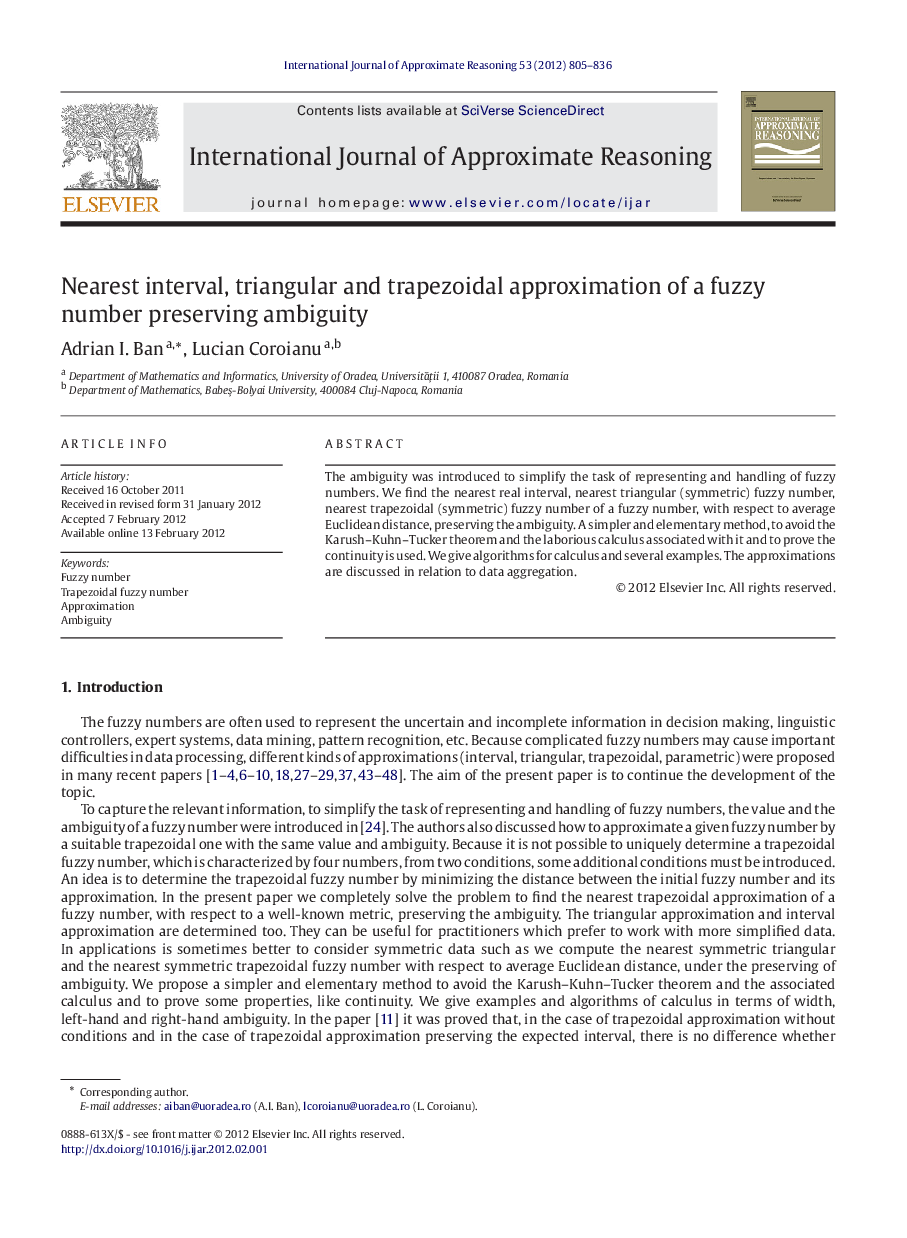| Article ID | Journal | Published Year | Pages | File Type |
|---|---|---|---|---|
| 398059 | International Journal of Approximate Reasoning | 2012 | 32 Pages |
The ambiguity was introduced to simplify the task of representing and handling of fuzzy numbers. We find the nearest real interval, nearest triangular (symmetric) fuzzy number, nearest trapezoidal (symmetric) fuzzy number of a fuzzy number, with respect to average Euclidean distance, preserving the ambiguity. A simpler and elementary method, to avoid the Karush–Kuhn–Tucker theorem and the laborious calculus associated with it and to prove the continuity is used. We give algorithms for calculus and several examples. The approximations are discussed in relation to data aggregation.
► We compute approximations of fuzzy numbers under preservation of ambiguity. ► We give algorithms of calculus and examples. ► Properties and relation to data aggregation are studied.
